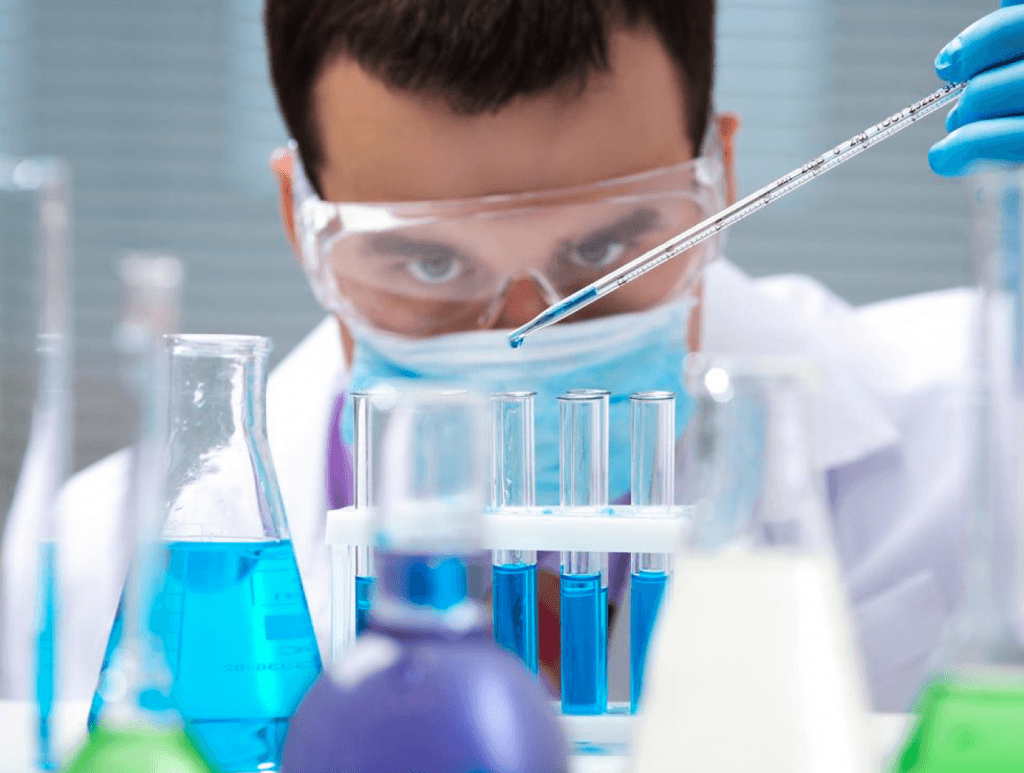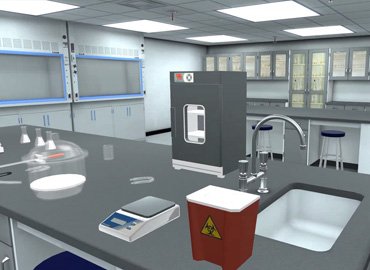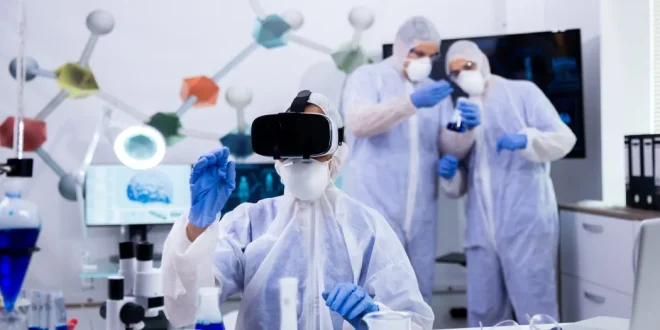Last Updated on September 17, 2025 by Muhamed Elmesery
Chemistry is a science that revolves around experiments above all else. Chemistry experiments are considered some of the best ways for scientific learning and science investigation and evaluation. So without practical experiments, chemistry can’t be taught.
We can define chemistry experiments as a group of actions and observations done to solve a question or particular problem, to support or falsify a hypothesis or research concerning phenomena conditions.
This is doable by introducing some new variables with the purpose of studying them. Chemistry experiments are also used to train people who need to carry out a chemical or physical phenomenon.
Pick The Best Virtual Plan from Praxilabs

Table of Contents
History of Chemistry Experiments
Chemistry as a science depends on using a laboratory and cannot be effectively taught without doing experiments in it.
Doing chemistry experiments in laboratories has a vital role in science curriculums as a means for our young students to make sense of the natural world they live in. Since the 19th century, when schools began to teach science systematically, science laboratories have become a distinctive feature of chemistry learning.
After the First World War and with rapidly increasing scientific knowledge, science laboratories were used mainly as a means of confirming and illustrating information previously learnt in a lecture or from textbooks.
With the reform in science education in the 1960s in many countries (e.g., CHEMStudy in the USA and Nuffield Chemistry Program in the UK), the idea of science practical work was to engage students in investigations, discoveries, inquiries, and problem-solving activities. In other words, science laboratories became the core of the science learning process (Shulman and Tamir, 1973).

The Main Goals of Sciences Laboratory Instructions
Based on the previously mentioned thorough review of the literature, this a list the following of goals for laboratory instruction in sciences:
- To maintain interest, satisfaction, curiosity and open-mindedness.
- To develop creative thinking skills.
- To develop the ability of problem-solving.
- To promote aspects of scientific thinking.
- To develop conceptual understanding.
- To develop practices like doing an experiment, collecting data and analyzing and interpreting results obtained from conducting the experiment.
Try Praxilabs' Virtual Labs for Free
Types of Chemical Reaction Experiments
There are 5 main types of chemical reactions:

- Synthesis Reactions
It means that reactants combine together (2 or more) to synthesis 1 new product.
Example:
H2O(l) + SO3(g) → H2SO4(aq.)
C(s) + O2(g) → CO2(g)
- Decomposition Reactions
It means that a single reactant decomposes or breaks down to form 2 or more products.
Example:
CaCO3(s) → CaO(s) + CO2(g)
H2CO3(aq) → H2O(l) + CO2(g)
- Single-Replacement Reactions
It means that a single element replaces a similar element of an adjacent reactant compound.
Example:
Zn(s) + CuSO4(aq) → ZnSO4(aq) + Cu(s)
- Double-replacement Reactions
It means that 2 ionic compounds exchange or replace ions and producing 2 new ionic compounds.
Example:
HCl(aq) + NaOH(aq) → NaCl(aq) + H2O(l)
NaCl(aq) AgNO3(aq) → NaNO3(aq) + AgCl(s)
- Combustion Reactions
It means that a single element or compound combines with oxygen gas and release energy. This oxidation is called burning.
Example:
2Mg(s) + O2(g) → 2MgO(s) + energy
C(s) + O2(g) → CO2(g) + energy
Branches of Chemistry
There are five main branches of chemistry:

organic chemistry, inorganic chemistry, biochemistry, physical chemistry and analytical chemistry.
Chemistry branches interferes with physics and biology and it can also interferes with engineering.
Organic Chemistry
Organic chemistry is the study of carbon (that is the main component of any living organisms) and its compounds. It also studies the chemistry of life and reactions of living organisms. It is also the study of reactions, structures and properties of of any compound that contain carbon atom.
Inorganic Chemistry
Inorganic chemistry is the study of inorganic compounds and not covered by organic chemistry ( compounds that don’t contain a C-H bond ).It is the study of properties and behavior of inorganic compounds, including metals, minerals, organometallic compounds ionic compounds, cluster compounds, and solid-state compounds.
Analytical Chemistry
Analytical chemistry is the study of the chemistry of matter and the development of tools to measure properties of matter. Analytical chemistry includes processes like quantitative and qualitative analysis, separations, extractions, distillation, spectrometry and spectroscopy, chromatography, and electrophoresis. Analytical chemistry is concerned with the study of structure and composition of matter.
Biochemistry
Biochemistry is the study of chemical processes that occur inside living systems like proteins, carbohydrates, nucleic acids, lipids, drugs, and neurotransmitters. The science of Biochemistry is closely related to genetics, molecular biology and the biology of cells.
Physical Chemistry
Physical chemistry is the branch of chemistry that applies physics to the study of chemistry, which commonly includes the study of how chemical reactions occur ,also how matter behaves on a molecular and atomic level and the thermodynamics applications and quantum mechanics.
Other Branches of Chemistry You Can’t Miss

There are other branches of chemistry and ways can be divided into categories.
Other examples of branches of chemistry include the following:
Green Chemistry, Chemical Kinetics, Astrochemistry, Nuclear Chemistry, Geochemistry, Electrochemistry, Quantum Chemistry, Polymer Chemistry, Radiochemistry, Theoretical Chemistry and more.

Chemistry Experiments at Virtual Labs
The 3D Virtual Lab is a online simulation of the chemistry lab. The main goal of doing chemistry experiments at virtual labs is to help students link chemical computations with the real chemistry lab. The virtual chemistry lab allows students to perform the experiments in a manner resembling the real chemistry lab.
Chemistry moves from in-person lab and the classroom to the computer, as working in a virtual chemistry laboratory and viewing simulations provide additional ways of learning chemistry.
14Ways Chemistry Experiments at Virtual Labs Improve Teaching
- Virtual labs make students can conduct many experiments that are difficult to conduct in real laboratories(as they dangerous).
- Teachers, professors and students can save time and effort by doing chemistry experiments at virtual labs because they don’t need to adhere to certain times to enter the lab, or to move from one place to another. by using virtual labs, they can conduct experiments anytime and anywhere.
- Virtual labs enable students to change the inputs used in the chemistry experiment without worrying about any risks effects of these changes.
- The virtual lab provides enjoyment and fun during experiments.
- Students can use and learn more about the latest technologies and also keep up with the technological development of the digital age by using virtual labs.
- Virtual labs allow students to perform the practical chemistry experiments related to the theoretical courses so they can absorb the courses well.
- Virtual labs provide flexibility and fun in conducting chemistry experiments.
- By using virtual labs help students can conduct the experiment more than once (an infinite number of times).
- Virtual labs protect students and teachers from hazards like the direct contact with toxic substances or radioactive chemicals and there is no handling of explosive devices or electricity.
- Virtual labs help students to search and gather information during the experiment as they stay in touch with the Internet.
- In order to exchange experiences, virtual labs enable students to record results electronically and share them with others .
- Virtual labs provide teachers with the opportunity to follow up and evaluate students electronically.
- Virtual labs provide a complete Learning Management System (LMS) around the virtual labs where students can avail the various tools for learning including addition web-resources, videos, animated demonstrations and self-evaluation.
- Virtual labs help students learn basic technology techniques and practice methods with keeping advantages of chemistry laboratory.
Start The Virtual Chemistry Labs Experience Now!
Dangers You Need to Avoid in Real Chemistry Experiments
When dealing with hazardous chemicals, there are many ways you could potentially be exposed like through skin, oral ingestion, and inhalation.
Skin and eye contact
When handling chemicals directly, skin and eyes are at risk and careful safety precautions must be taken at all times to minimize risks. The most common complaint of skin contact with chemicals is irritation and burns ranging in severity from mild to severe. Any toxic chemicals can also pass into the bloodstream after contact with the skin.
Oral Ingestion
Inhalation
Inhalation is the most common way for chemicals to enter the body and even the smallest amount of toxins inhaled into the body can be quickly absorbed and cause harm.
Symptoms of exposure to these risks range from irritability, coughing, headache, nausea and vomiting. Depending on the chemical absorbed by the body, it can be fatal and cause permanent damage to organs such as the kidneys, liver, and lungs.
Examples of harmful chemicals
There are examples of the dangerous chemicals you can deal with in the real lab.
- Organic solvents such as benzene and acetone.
- Strong acids such as sulfuric acid and hydrofluoric acid.
- Carcinogens such as toluene and formaldehyde.
- piranha mix.
If these chemicals come in contact with the skin, it is very aggressive, causing permanent pain and damage. It is also difficult to get rid of them because they will continue to react for a long period of time.
Conducting chemical experiments – especially dangerous ones – through virtual labs avoids exposure to such risks and provides students with a safe work environment
PraxiLabs Virtual Labs for Chemistry
PraxiLabs provides educational organizations and their students with a big catalog of virtual chemistry experiments for college students. Experiments currently available covers organic, inorganic, general, and analytical chemistry. Without the hazards or high costs, students can learn and understand through our virtual labs.
Organic Chemistry Experiments from PraxiLabs
PraxiLabs provides group of organic chemistry practical experiments like:
- Diels Alder Reaction
- Synthesis of Aspirin
- Esterification
- Electrophilic Substitution (Azo Coupling)
- Reaction of Alkyl Halides (Hydrolysis of Alcohols)
- Determination of Sulphuric Acid Concentration by Titration
- Analysis Mixture of Sodium Hydroxide and Sodium Carbonate by Warder Titration
- Determination of Concentration of Silver Nitrate by Fajanʼs Method
- Determination of Concentration of Citric Acid in Soda by Titration
- Determination of Concentration of Silver Nitrate by Mohrʼs Method
- Standardization of Potassium Permanganate
- Determination of Water Hardness by Complexometric Titration
- Standardization of Sodium Thiosulphate using Iodimetric Titration
- GC/MS Analysis
- NMR Analysis
- (Strong acid / strong base titration) HCl/NaOH
- Weak base / Strong acid titration
 PraxiLabs A virtual world of science
PraxiLabs A virtual world of science






